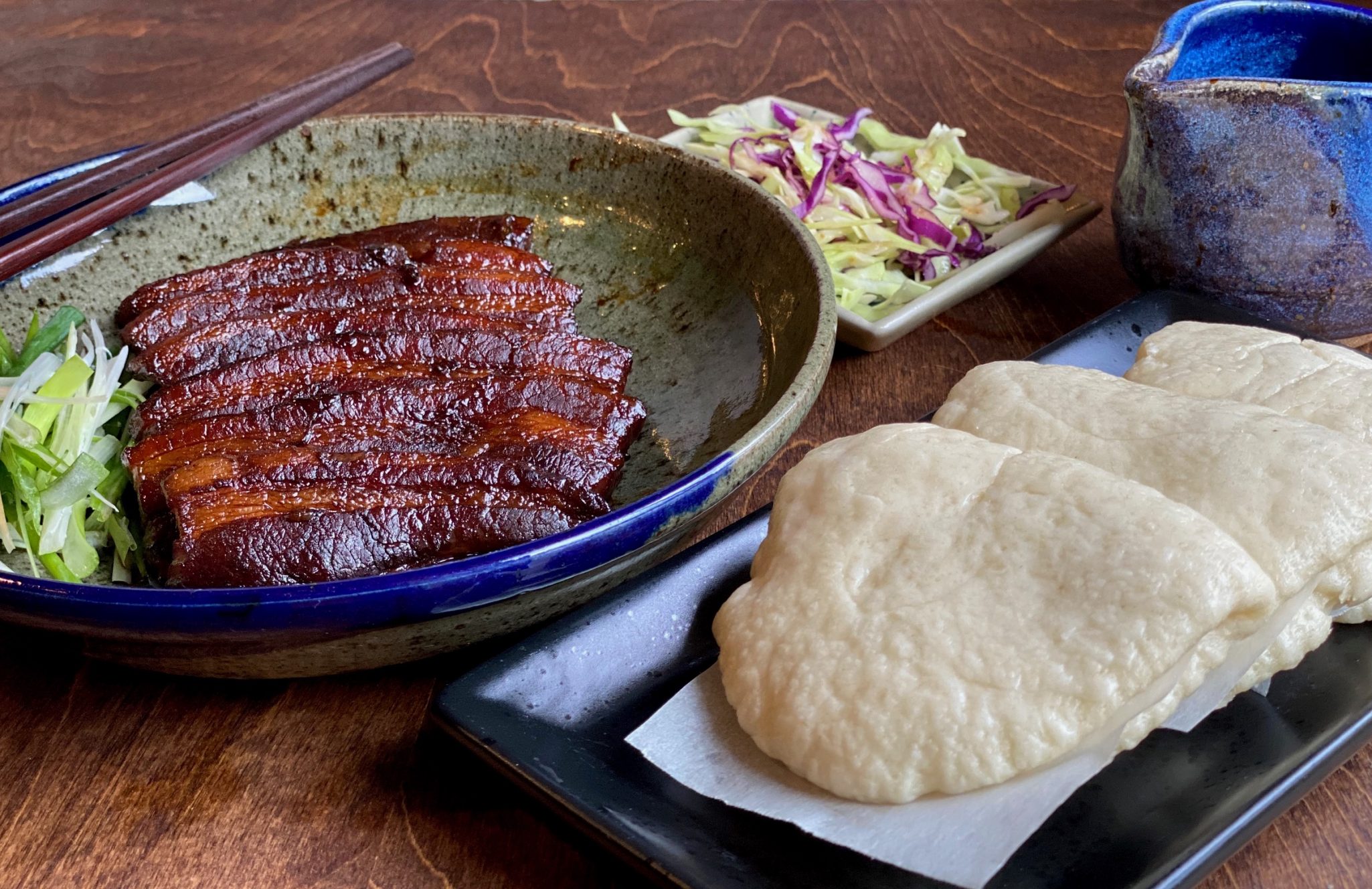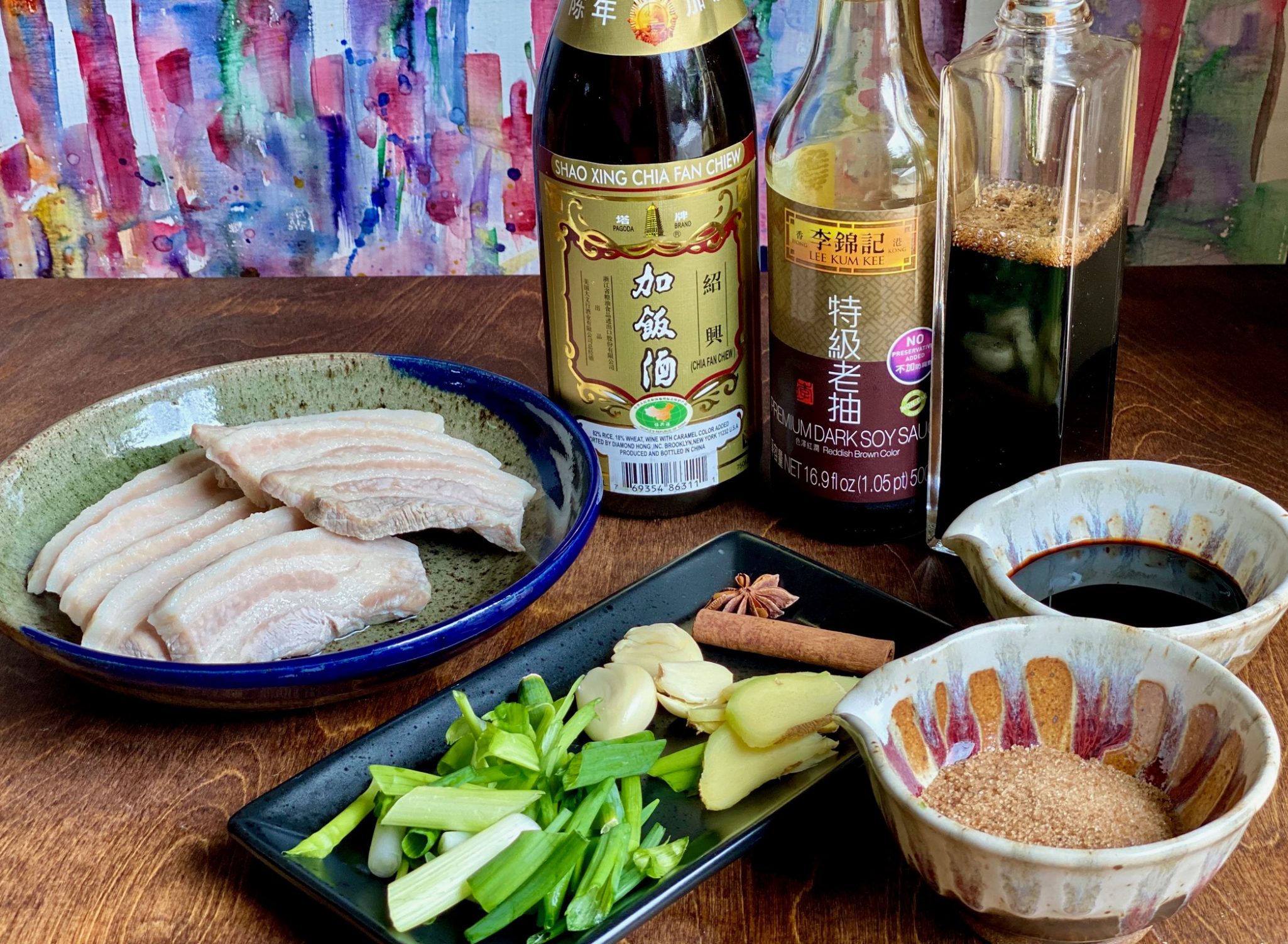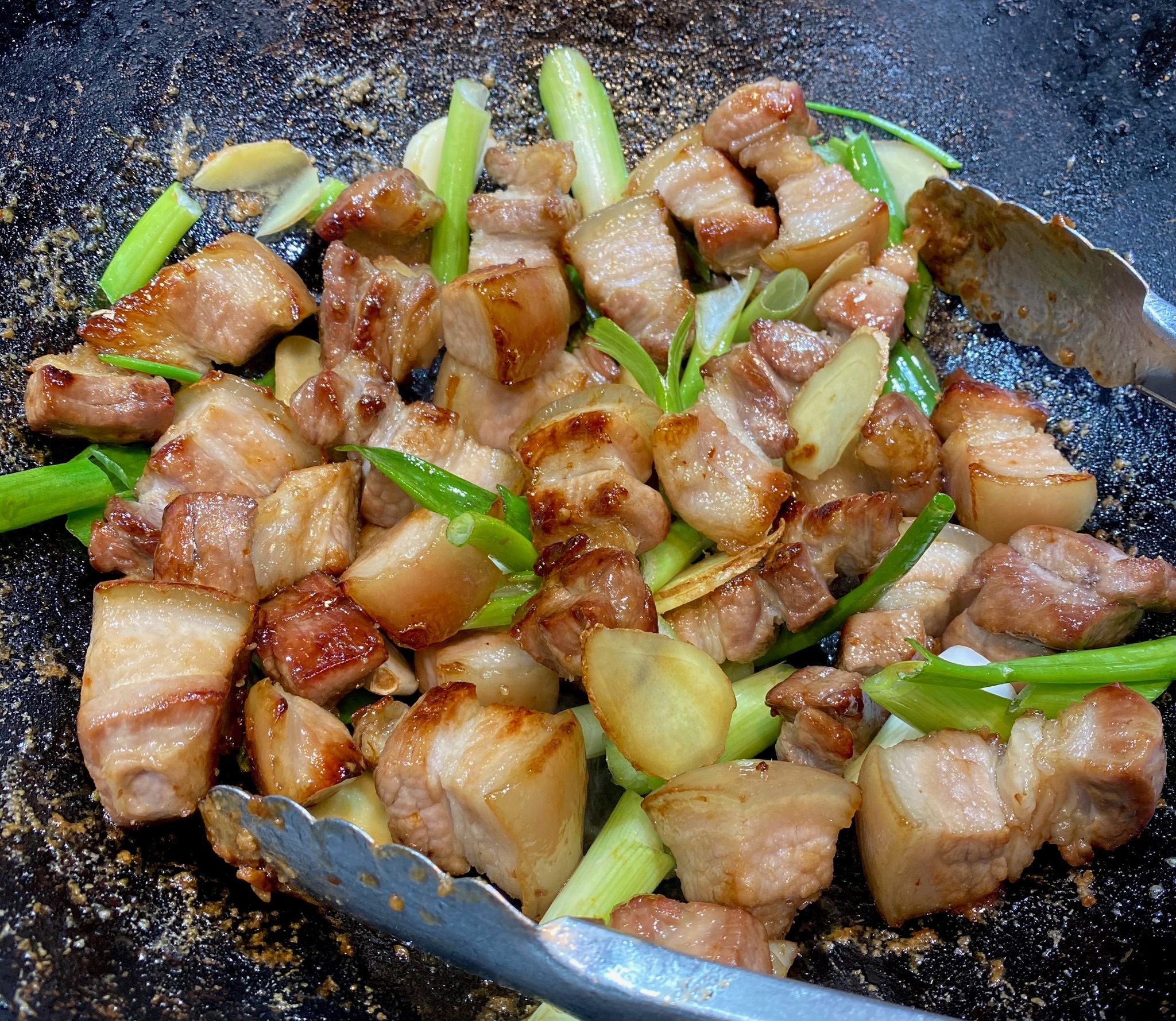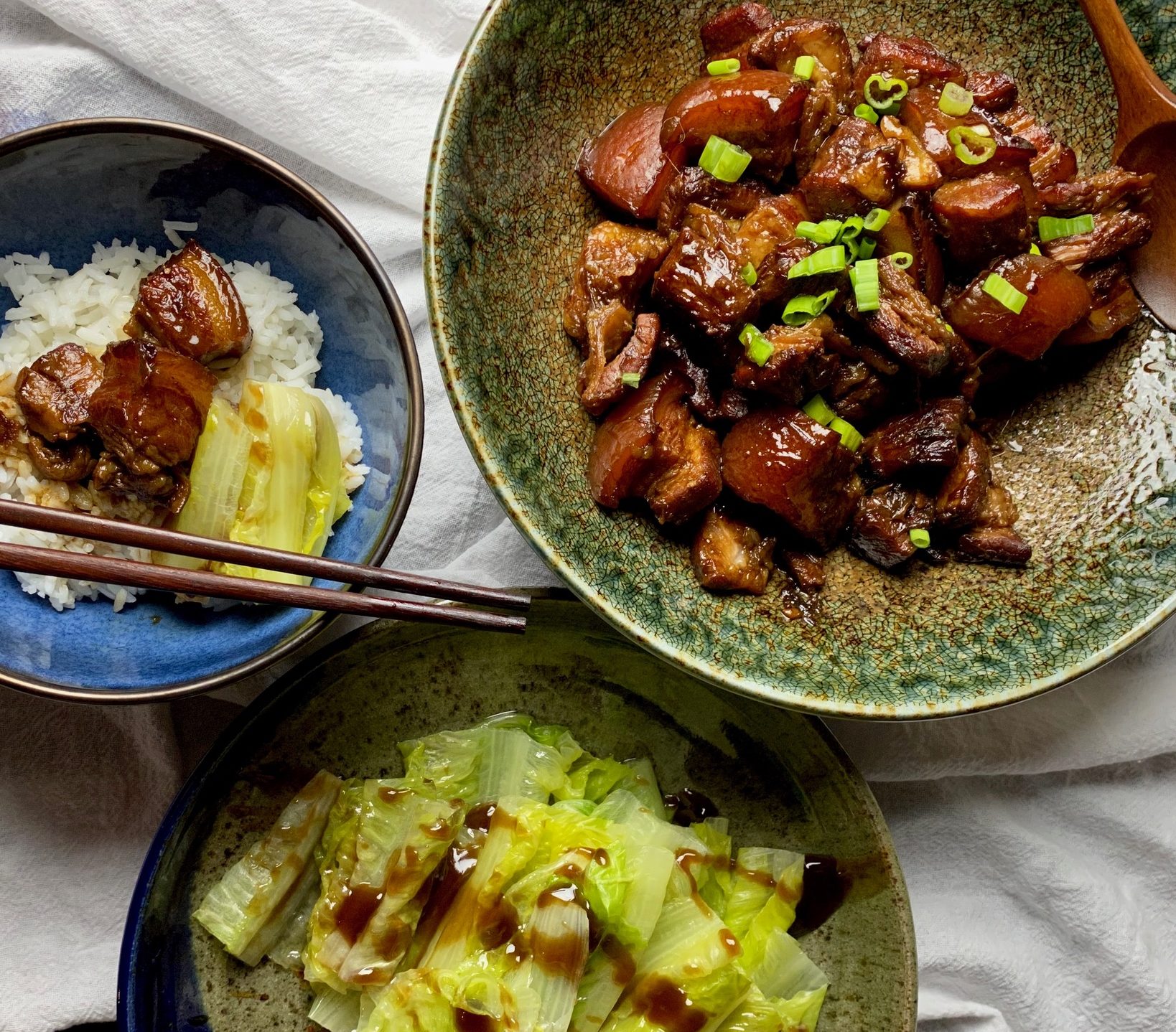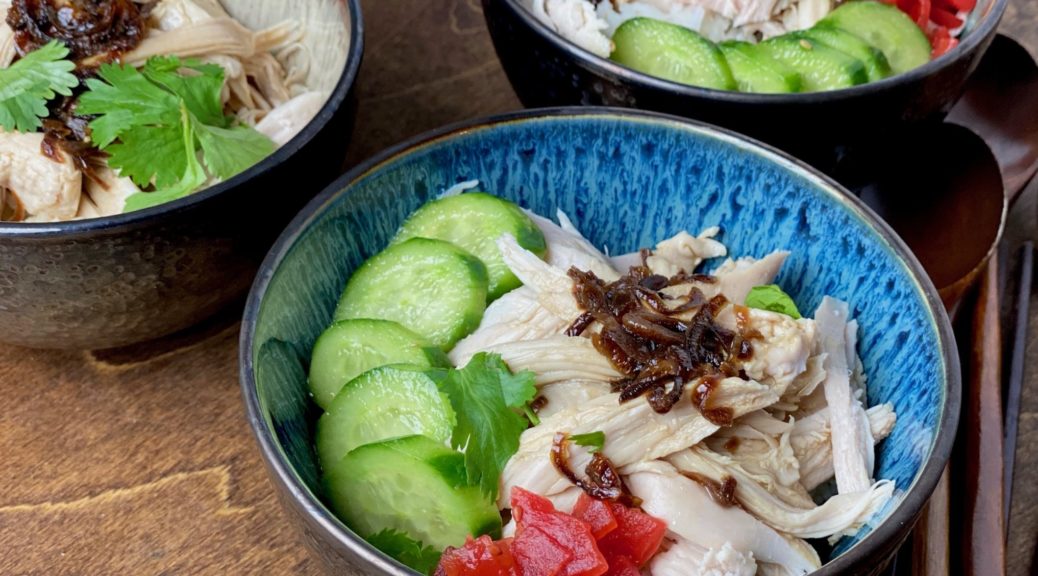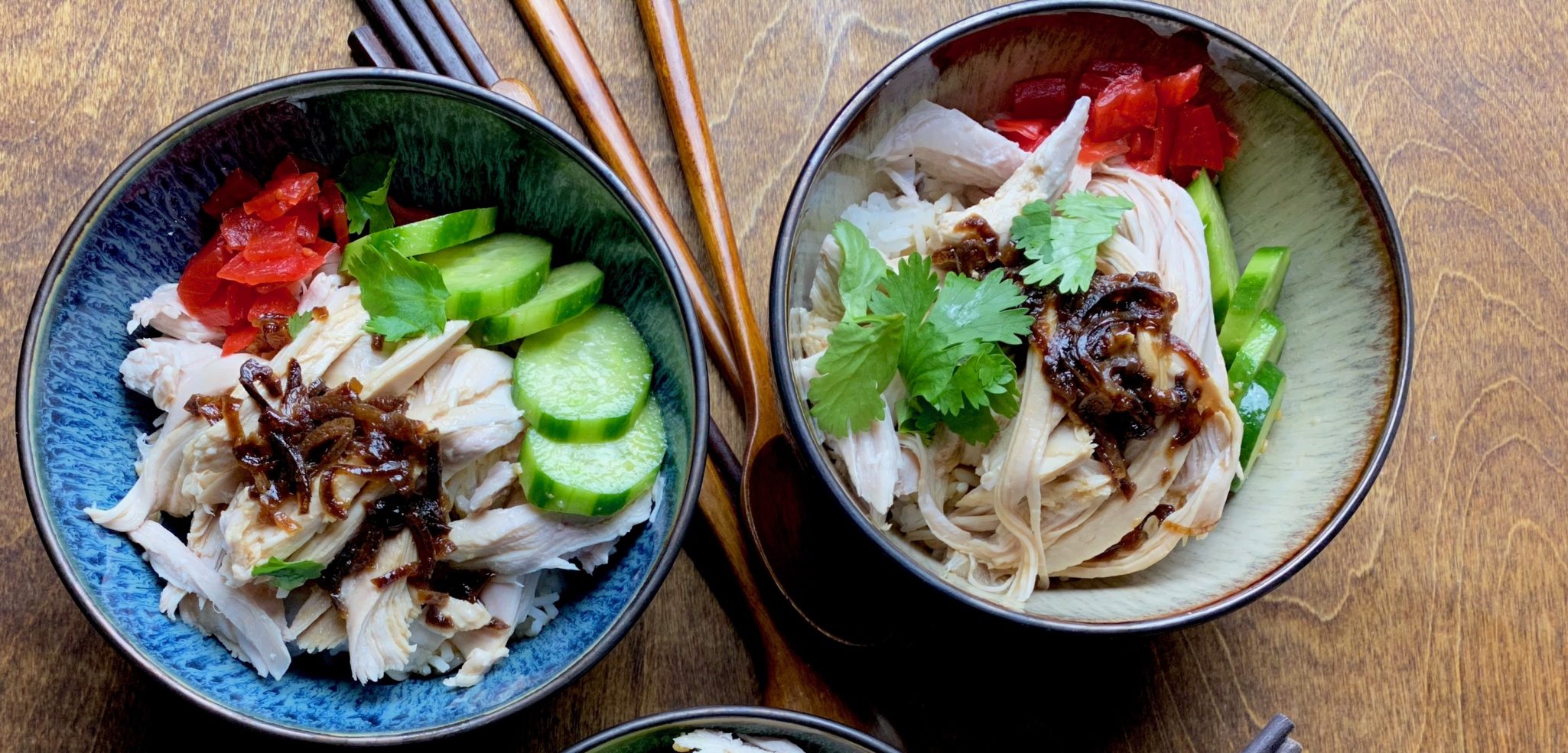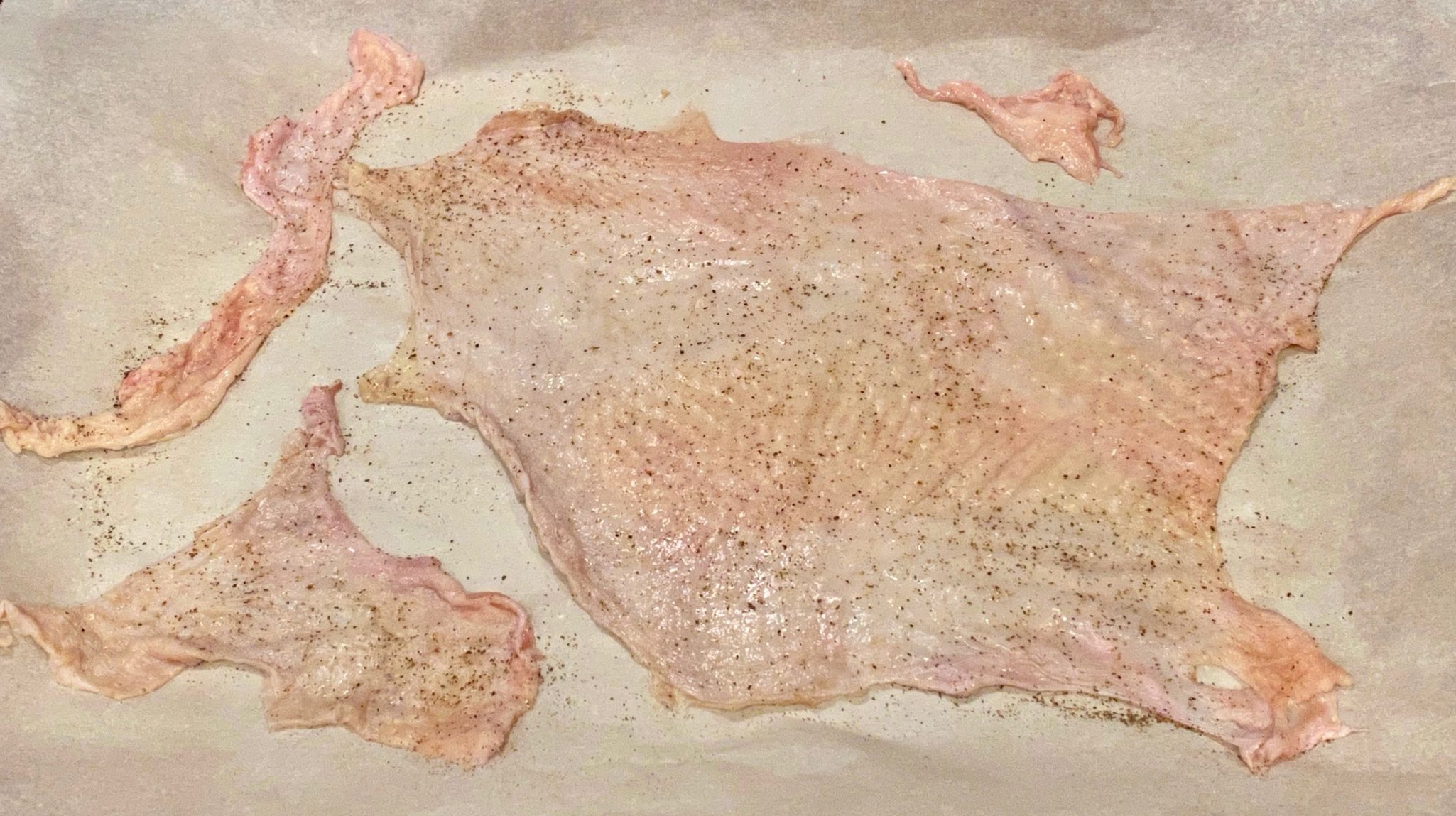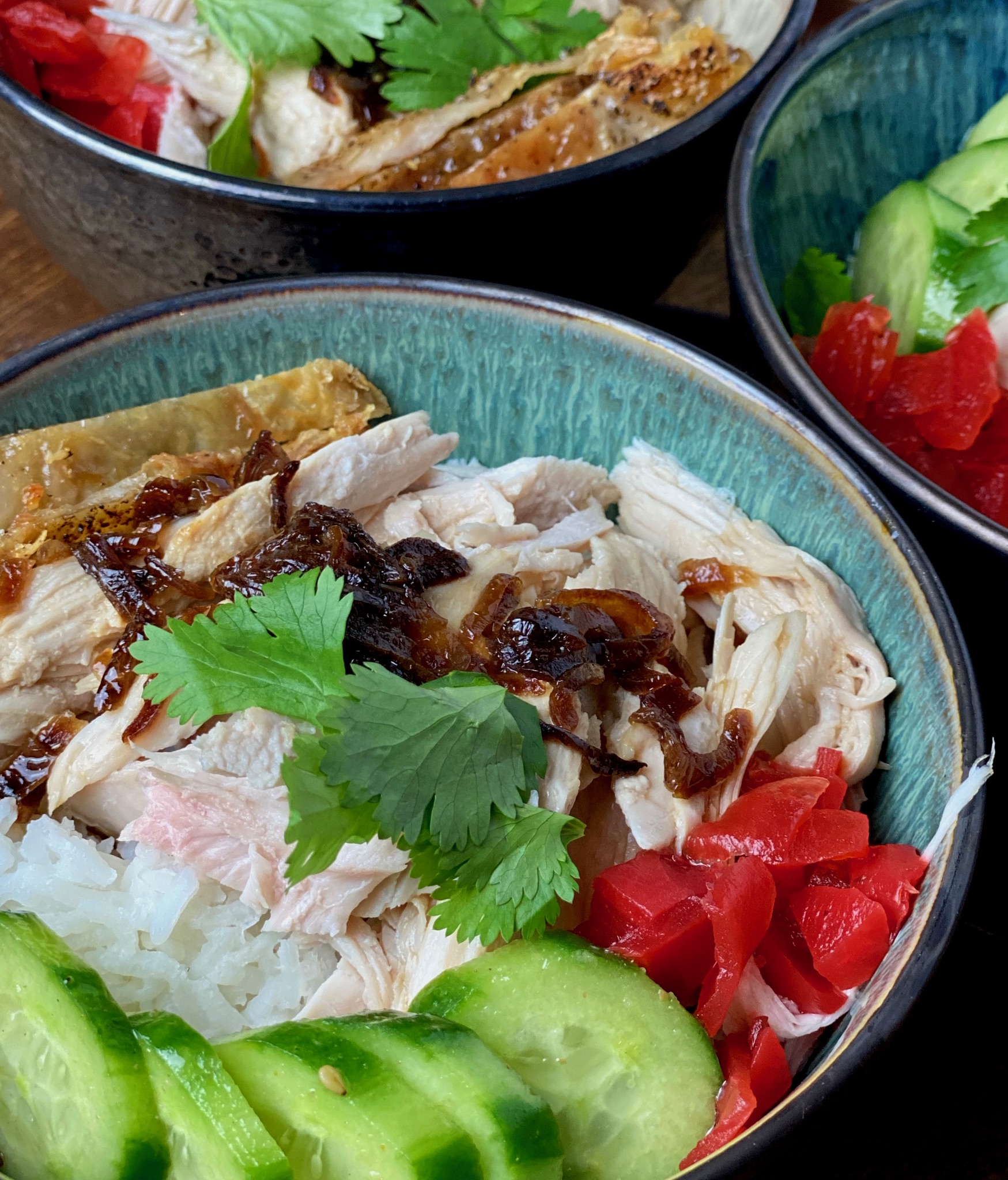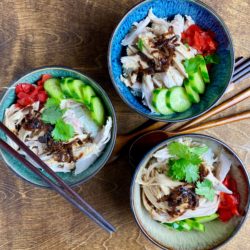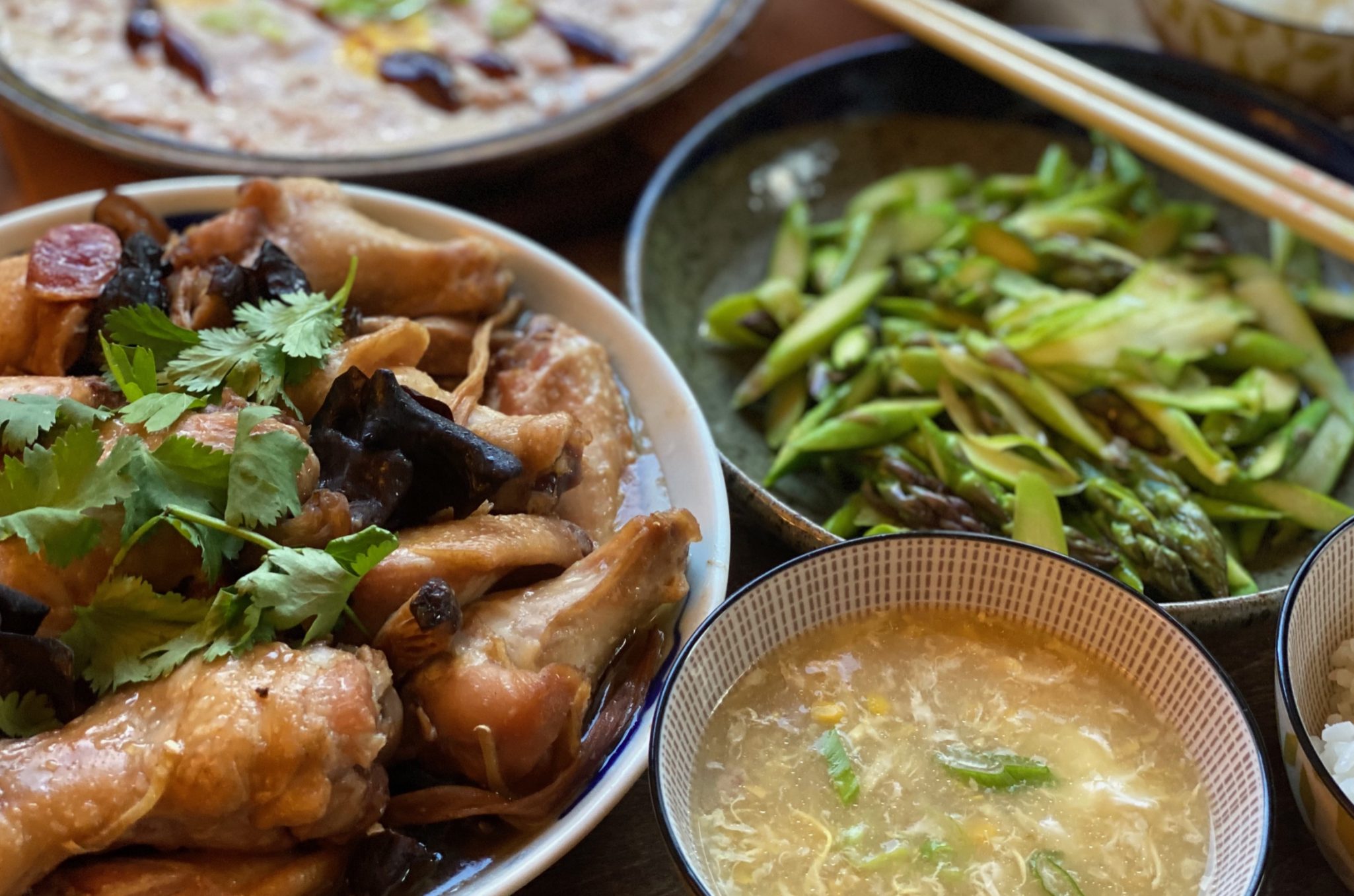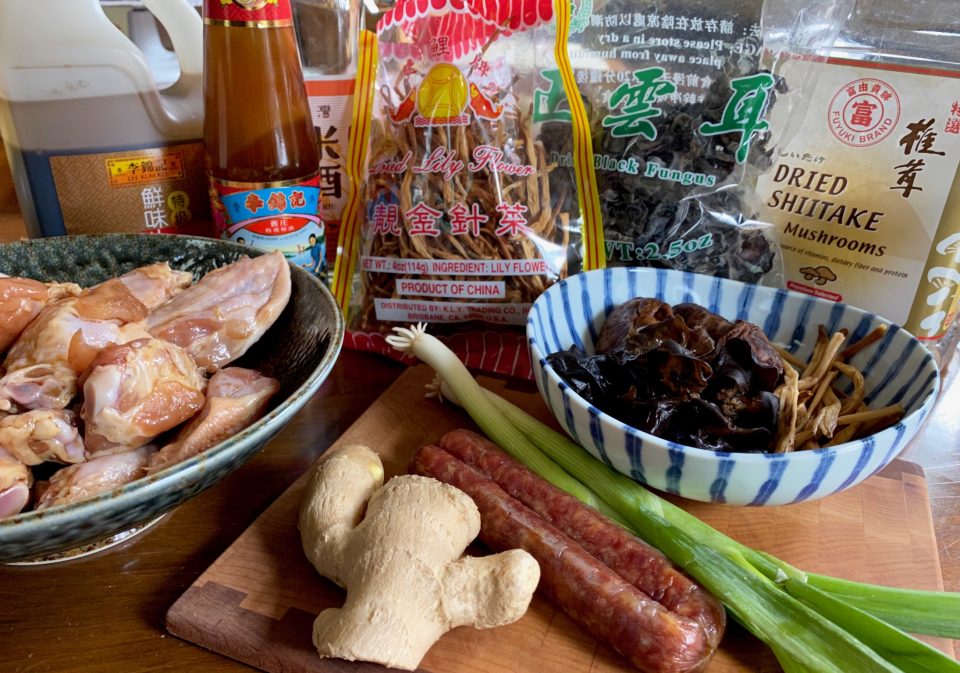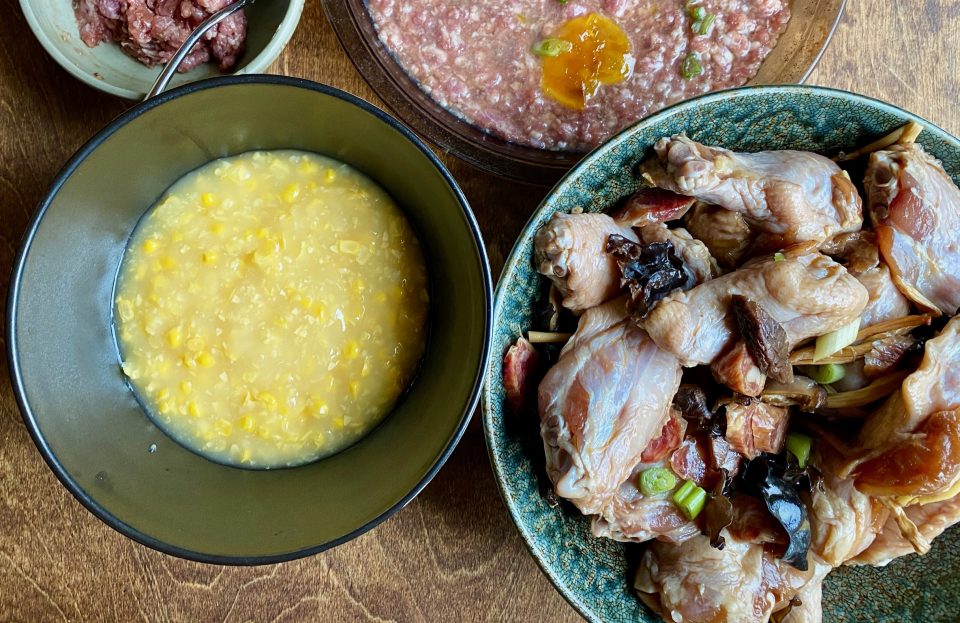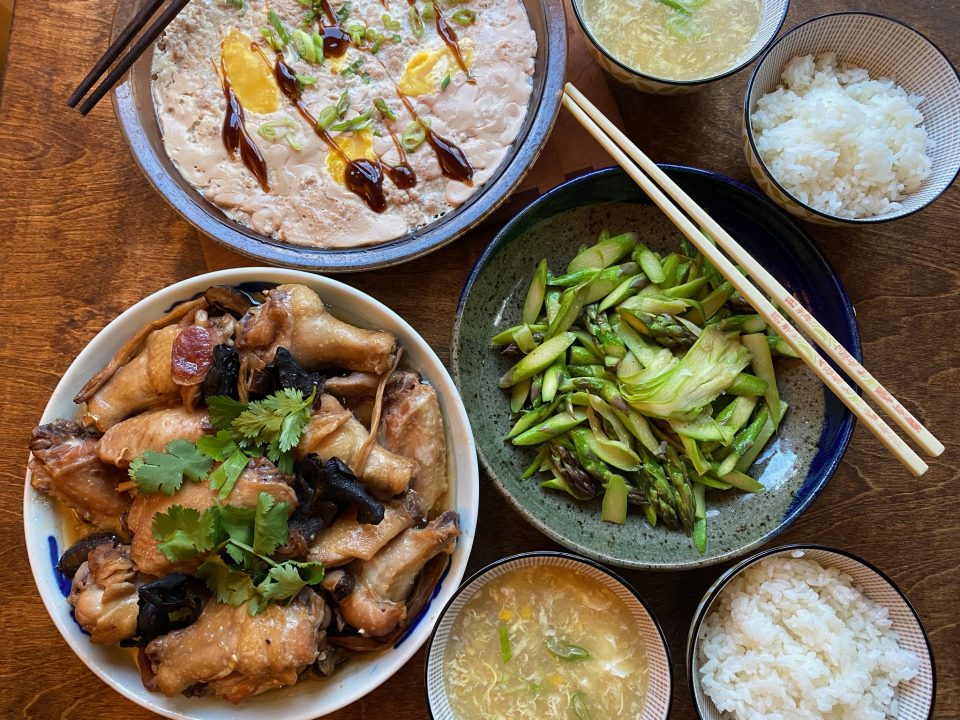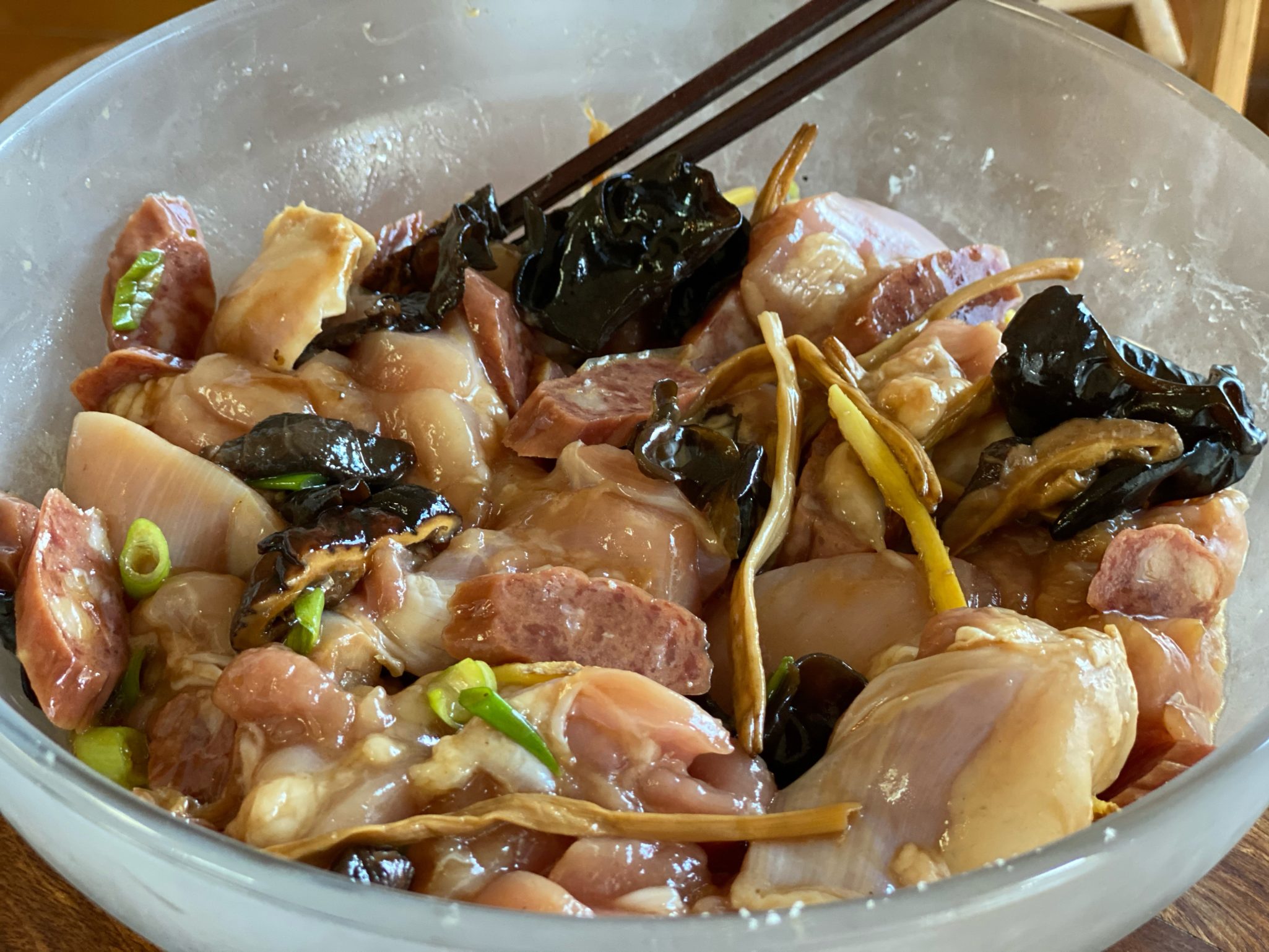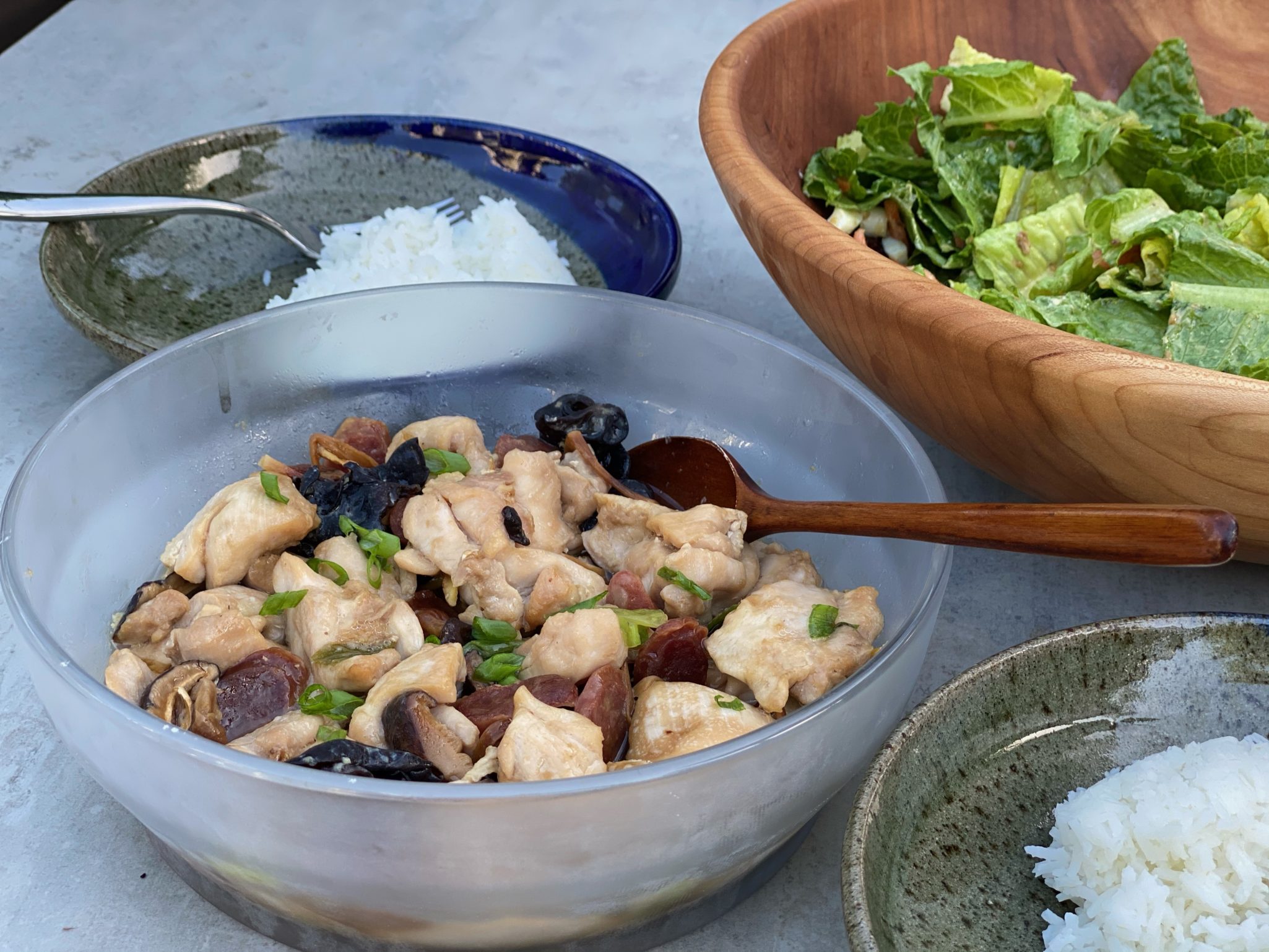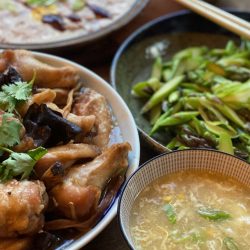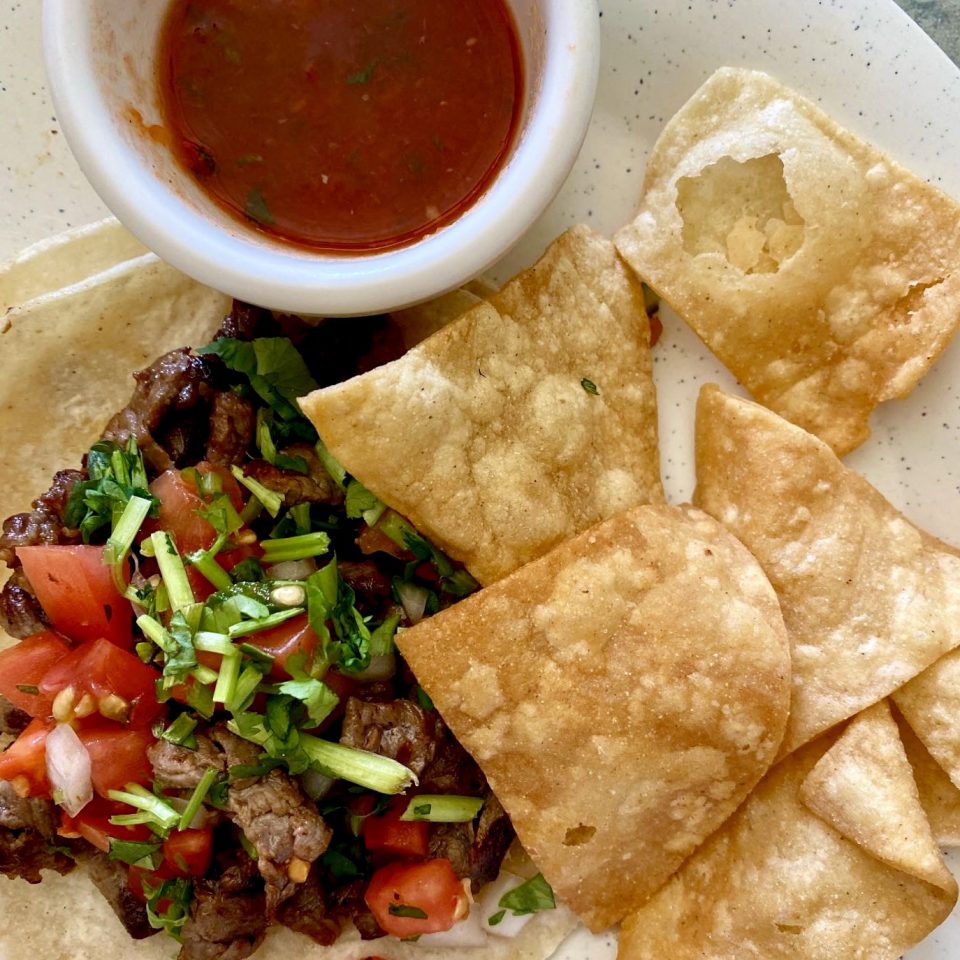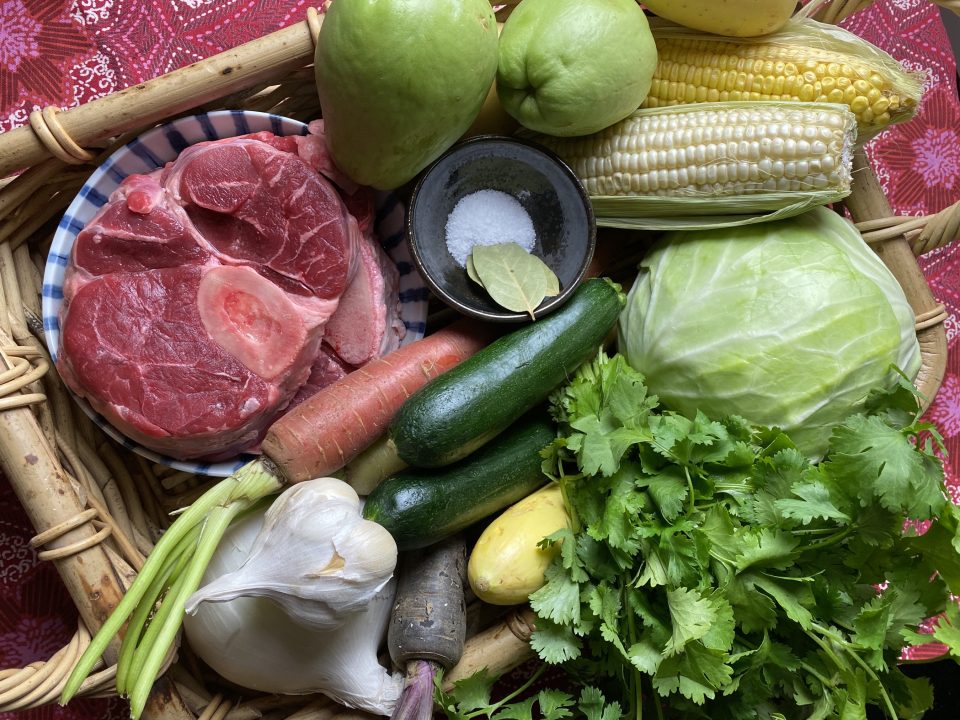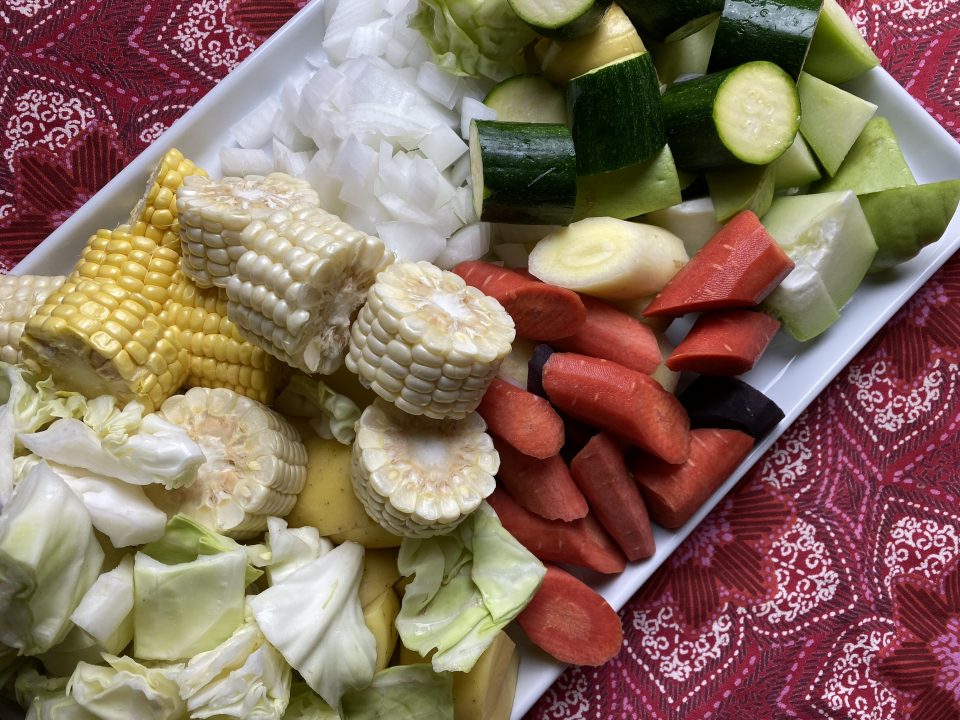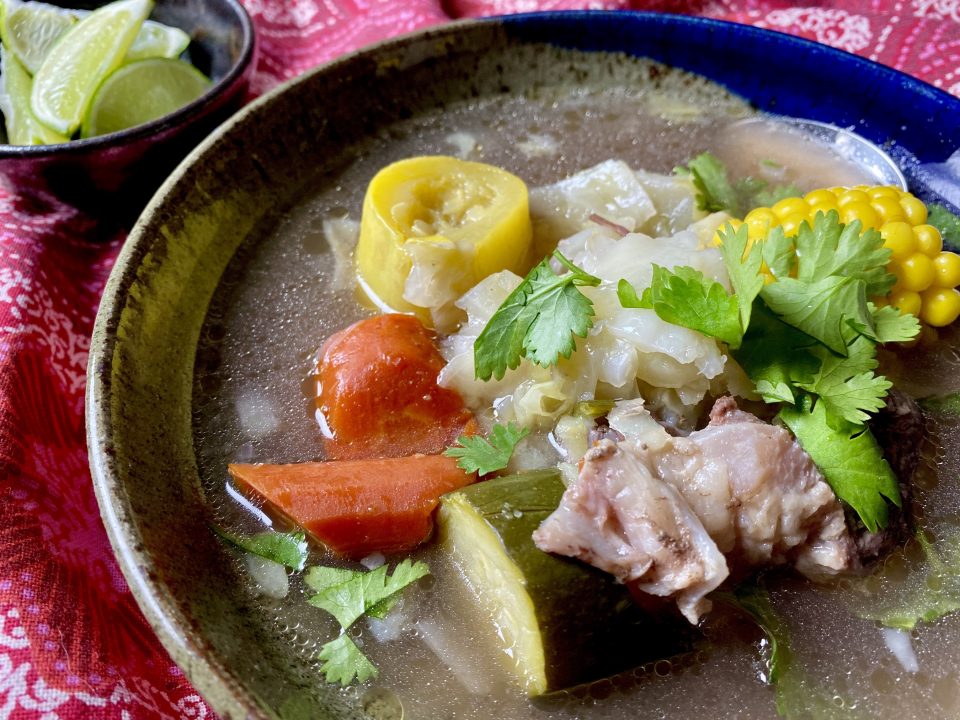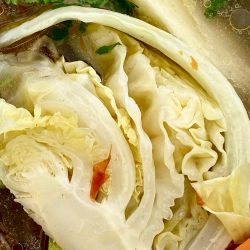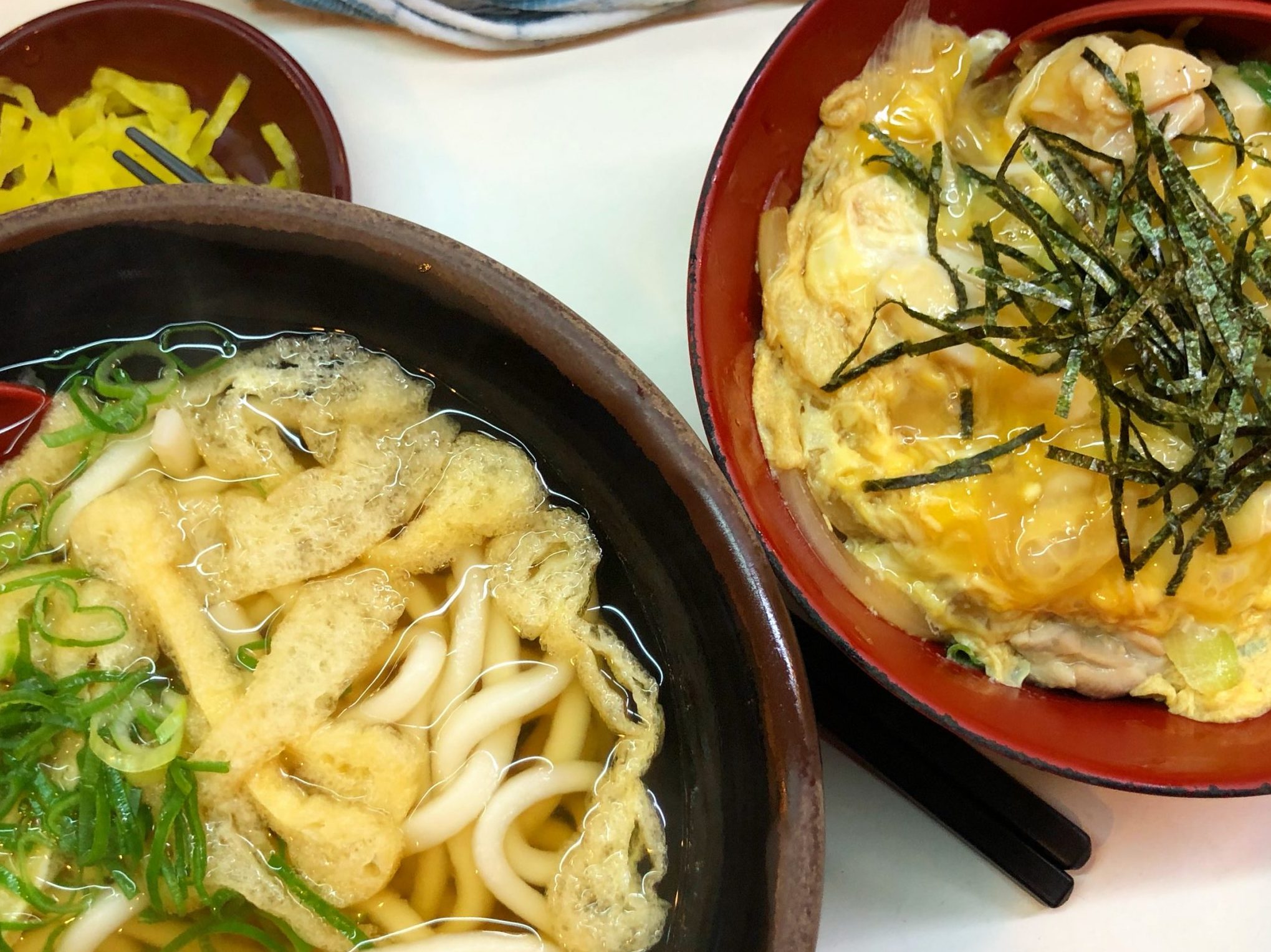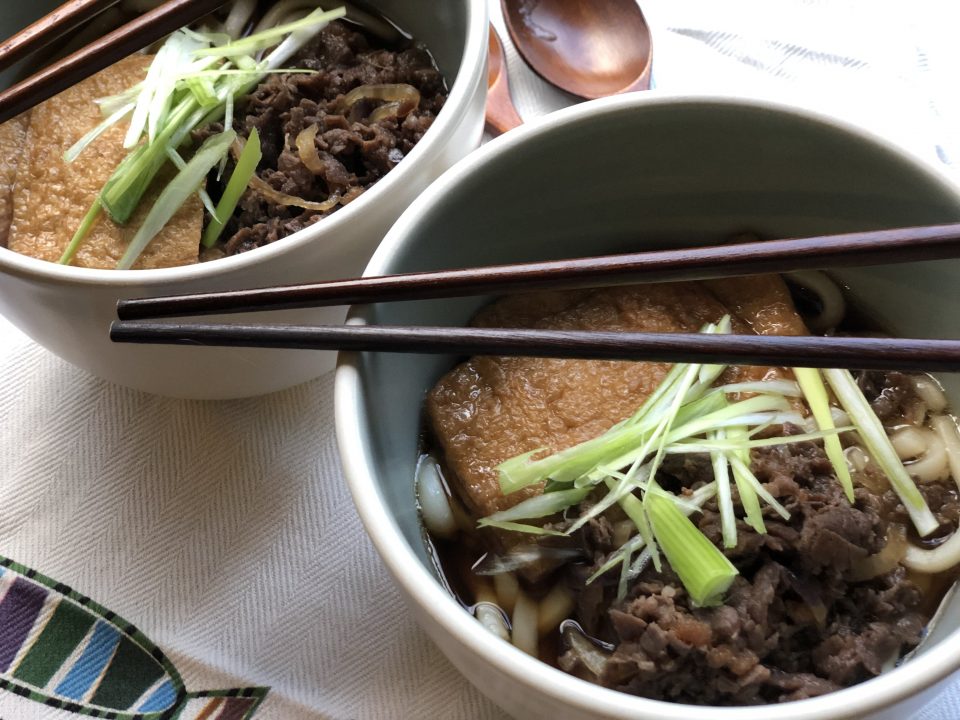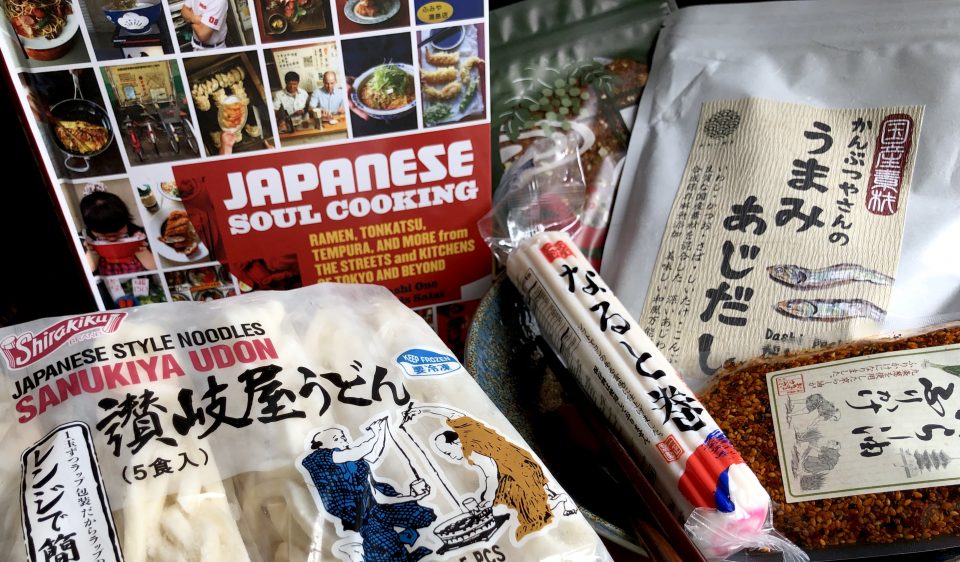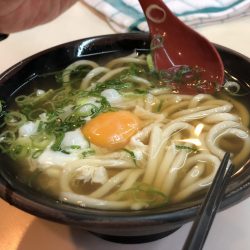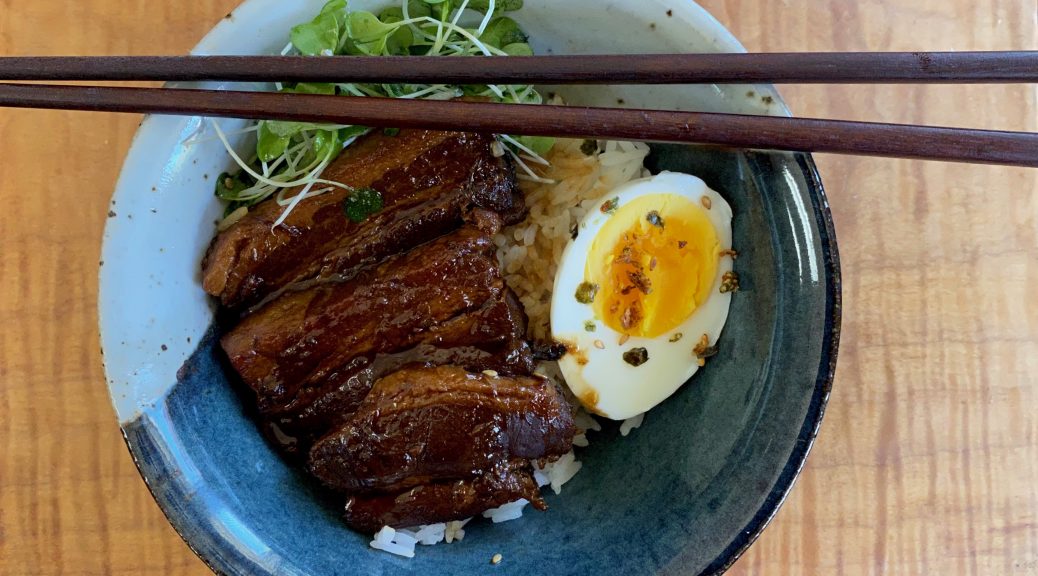
Red Cooked Pork 红烧猪肉, Sweet Relief
This post has been sitting on the back burner for a while, the majority of the time because I kept tinkering with the recipe. The other reason for its relegation, Jamie and I have been on a tear baking cookies and desserts for the holidays. It was time to circle back to this post-take a breather from all things sweet. So here it is, a post on one of my favorite dishes, Red Cooked Pork
I grew up eating Chinese food 5-6 days a week. Every meal more often than not featured pork. Ground pork was steamed into a delicious patty with salted egg or simmered in soups. Slices of pork were stir-fried with greens or with tofu and brown bean sauce for a quick meal. Every Chinatown deli strategically displays a whole pig, slow-roasted to perfection, it’s amazing-crunchy, crackly skin and succulent, juicy, tender meat enticing shoppers into the store. It goes toe to toe with any southern barbecued pork. I make my own Crispy Roasted Pork, it’s not hard and not to worry, you don’t have to roast an entire pig! Yes, pork is king in Chinese cuisine.
Why pork?
The pragmatic, economical choice. Pigs eat almost anything and don’t require grazing land, important in an agrarian society like China. Pork can be steamed, boiled, baked, braised, fried, roasted-probably the only thing we don’t do is make it into ice cream-not surprising for lactose intolerant Asians. Almost every part of the pig is used or consumed. Ears, feet, snout, are pickled, braised, or fried. The fat is turned into lard, the blood is congealed and eaten…you get the picture.
And the obvious answer, it’s DELICIOUS.
I am hooked on Chinese Red Cooked Pork which uses pork belly. Now, don’t go Ewww, what do you think bacon is? Yep, thin slices of pork belly given a nifty name so jillions of people will eat it. Asian dishes often use pork belly in uncut slabs, in thick slices, cubed or diced. Red Cooked Pork is a classic dish, every Sichuan family passes down grandma’s recipe for Red Cooked Pork or 红烧猪肉. My go-to recipe comes from a favorite cookbook, A Common Table.
The easiest place to find pork belly is at your local Asian markets. In particular, Chinese markets carry ALL things pork. The pork belly is butchered into thick slabs-with or without skin, or into thin, medium, thick, or super thick slices. Korean markets also offer a variety of pork belly cuts to grill, stir-fry, or braise.
I could be wrong but there really isn’t a Cantonese version of Red Cooked Pork. Versions of red-cooked pork can be found in Sichuan, Shanghai, and Hunan where Chairman Mao’s Red Cooked Pork with chili peppers and aromatics is iconic.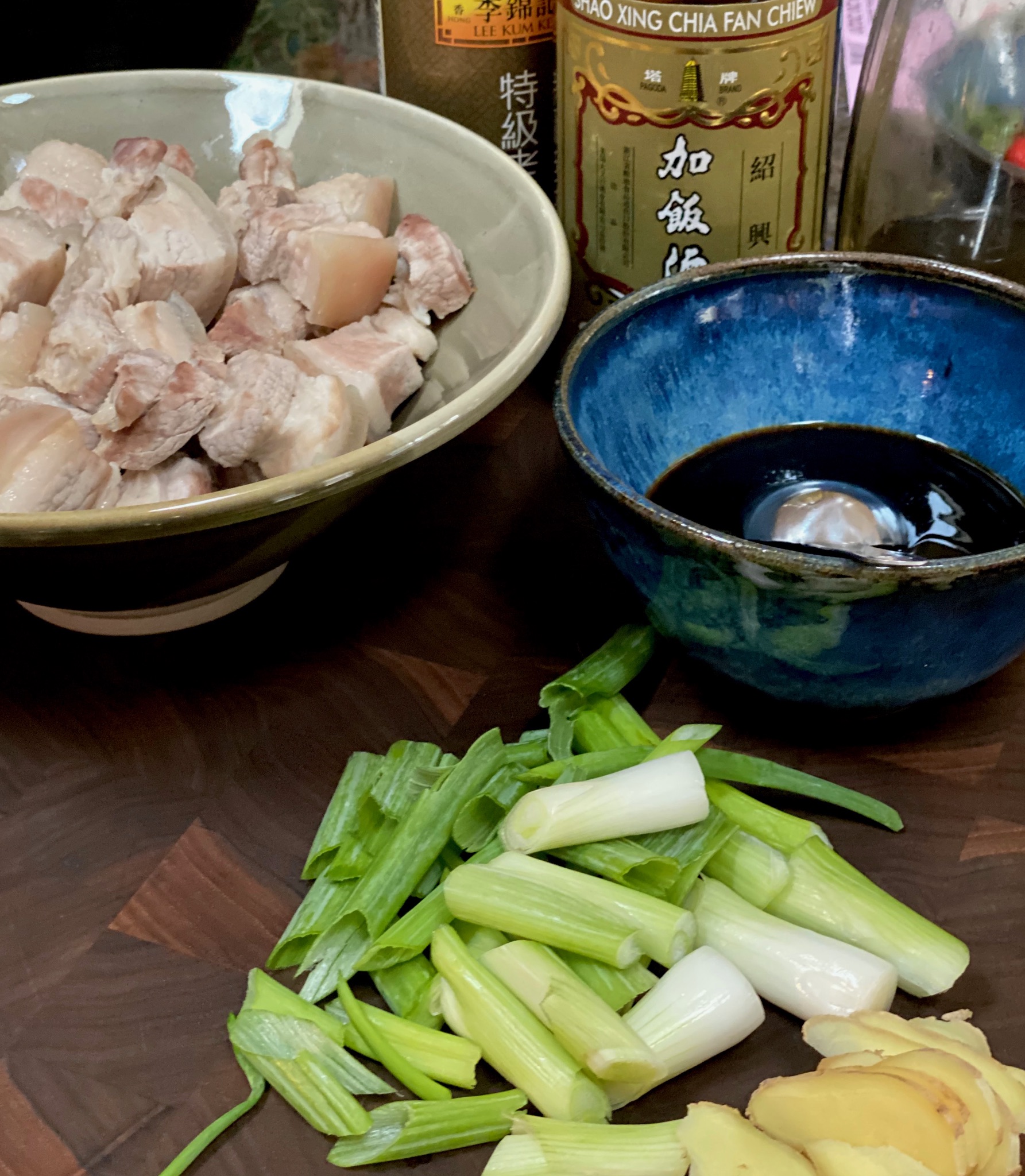
The Tinkering Begins
If I am making Red Cooked Pork for buns (bao) to be eaten like a sandwich, I use the wide thick slices. For rice bowls and noodle bowls, I like cubed or diced pork belly. Either way, the KEY is long, slow cooking. You can’t cut corners or the meat will not be meltingly tender. Keep vigil over the braising liquid, adding water if needed. There is a point where the meat will seem tender but dry and paradoxically you need to cook it longer to breakdown the fibers so the meat gives up and becomes this oozy delicious bite. That is pork-fection.
I’m not a big star anise fan, so I only use 1-star anise and add a cinnamon stick in place of additional star anise. Feel free to play with the amounts. The recipe calls for granulated or raw sugar, I prefer rock sugar. I searched for an equivalence and all I found is a one-inch piece of rock sugar is approximately 1 tablespoon of sugar. Crushed into smaller pieces, that 1 inch chunk was about 1.5 tablespoons of rock sugar.
Caramelize the pork in the sugar water mixture. Add aromatics, soy sauces, water, and braise for 1.5 to 2 hours until pork is tender.
Serve over rice and with greens such as poached lettuce or bok choy.
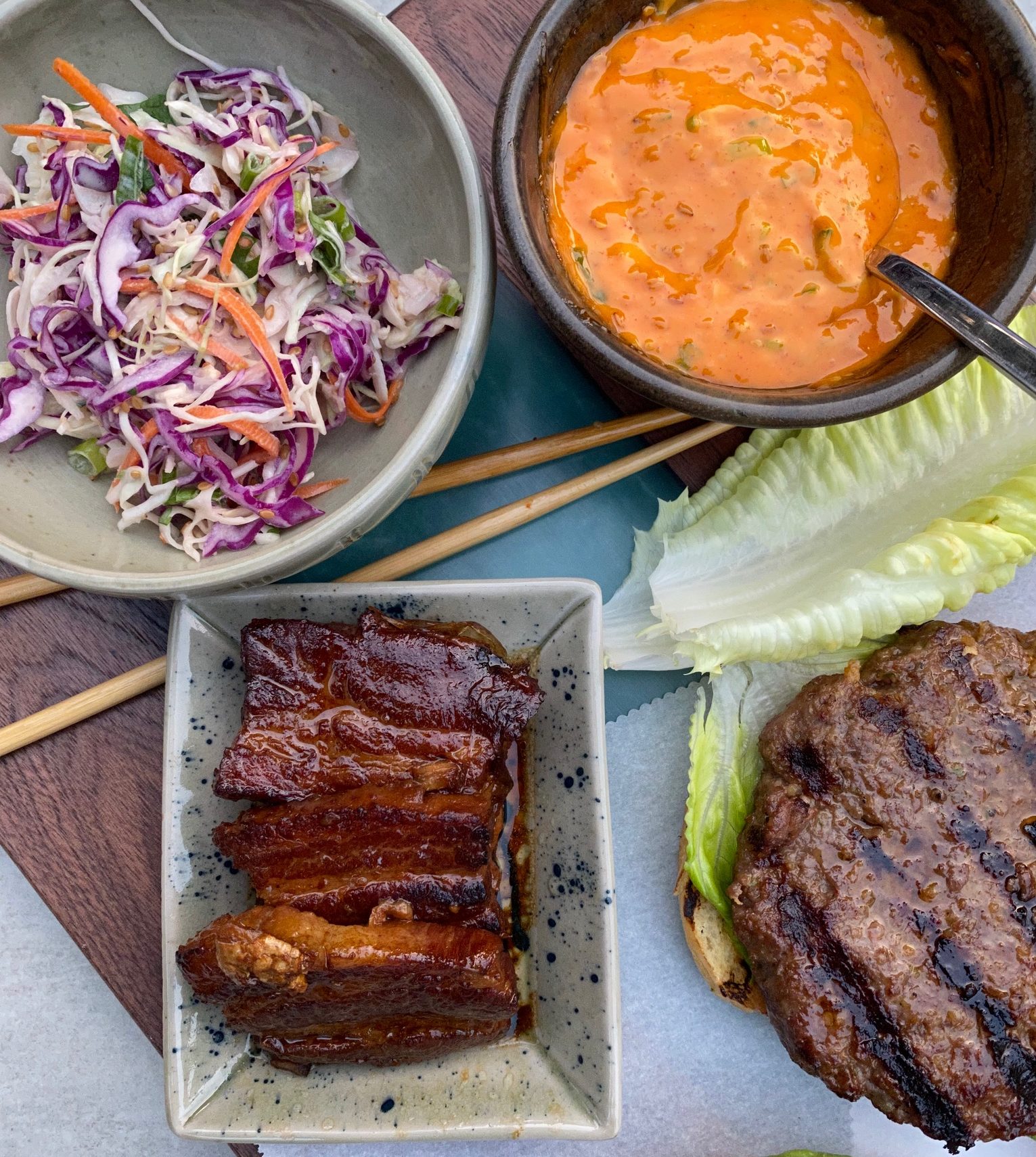
Red Cooked Pork Belly, Sesame Slaw, and Gochujang Mayo for my Asian version of a BLT Burger. How did I not win our annual burger cook-off?
Red Cooked Pork adapted from A Common Table
Ingredients
- 2 pounds pork belly or pork shoulder cut in 3/4- to 1-inch (2- to 2.5-cm) chunks
- 1/4 cup granulated sugar substitute rock sugar 3 tablespoons (50-75 gms) or to taste
- 2 tbsp water to caramelize sugar
- 2-3 cups water for braising liquid
- 3 to 4 scallions cut on the diagonal into 2-inch (5-cm) lengths (about 1/4 cup sliced)
- 3 to 4 garlic cloves smashed, or 1 tablespoon minced garlic
- 1 inch piece ginger root sliced into 6 to 8 circles
- 1 whole star anise 0-3 pods, your choice
- 1 stick cinnamon
- 1/3 cup Shaoxing rice wine dry sherry, or sake
- 3 tablespoons light or thin regular soy sauce 生抽, NOT low sodium
- 3 to 4 teaspoons dark soy sauce 老抽
Instructions
- Bring a large pot of water to a boil over medium-high heat. Add the pork and gently boil for about 10 minutes, skimming off any scum as it forms on top of the water. Drain the pork and rinse to remove any remaining scum.
- In a large wok or cast-iron skillet over medium-high heat, combine the sugar and 2 tablespoons water and stir until it dissolves. Tilt the wok or skillet to swirl the mixture, without stirring, just until it bubbles and begins to turn slightly darker in certain spots, 4 to 5 minutes. Be sure to watch it carefully so that the sugar doesn’t burn as the sugar can turn from brown to black in seconds.
- Add the pork and cook it with the caramelized sugar, stirring frequently, until the pork is browned and smells fragrant, about 4 minutes.
- Add the scallions, garlic, ginger, star anise and cinnamon, toss for 1 to 2 minutes to give the aromatics a quick cook. Add the rice wine, both soy sauces, and enough water to cover the pork, about 2 to 3 cups. Stir to combine and then cover and ever-so-gently simmer the pork over low heat until tender for approximately 2 hours. Stir every 15 to 20 minutes to prevent scorching and to make sure there is still enough liquid. Add water if the level gets too low.
- Once the pork is tender, take a look at the cooking liquid. If you prefer a thicker sauce, transfer the pork to a plate, return the heat to medium-high, and simmer, uncovered, until the sauce reduces to the desired consistency, 10 to 15 minutes. Be careful not to reduce the sauce too far as you’re going to want enough sauce to go over the pork and rice. Taste the sauce and, if desired, adjust with more soy sauce or sugar. Spoon the pork and sauce over rice.
- Serve over rice. Place pork on top of rice and drizzle a small bit of sauce over the cubes.
Pork Buns
- Cut pork belly into 1-4 to 1/2-inch thick slices approximately 2-2.5 inches in width instead of cubes. Proceed with braising instructions.
- Serve sliced pork with steamed Chinese buns. Garnish with green onions and cilantro.
